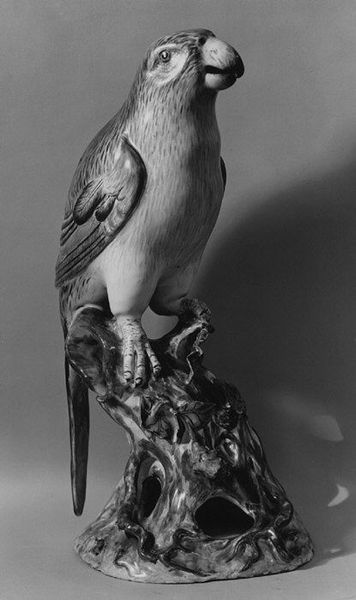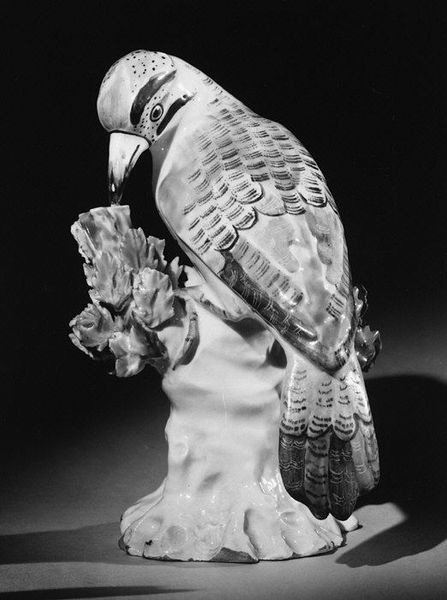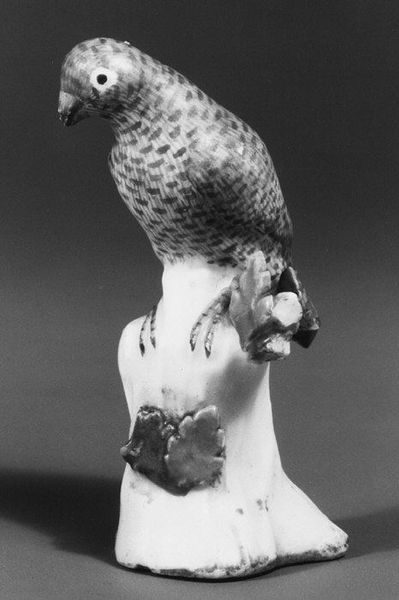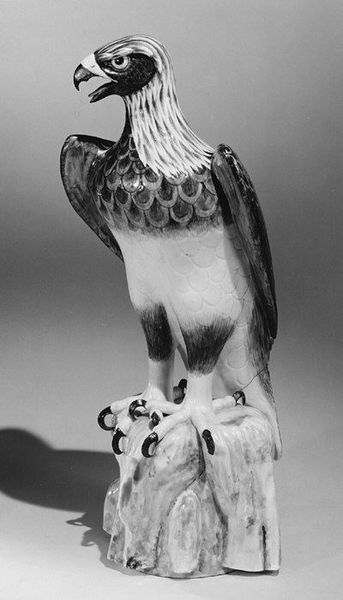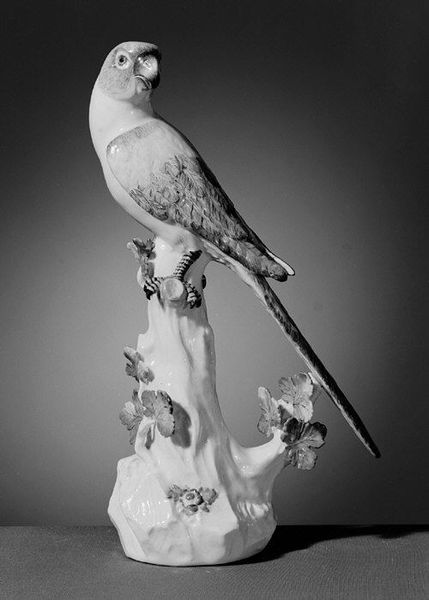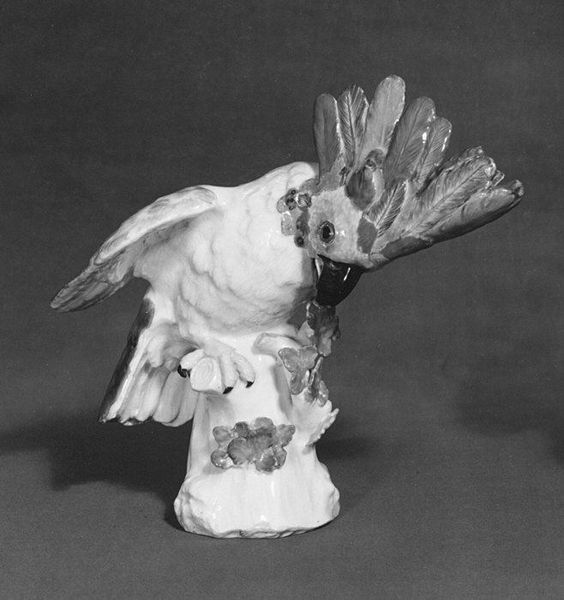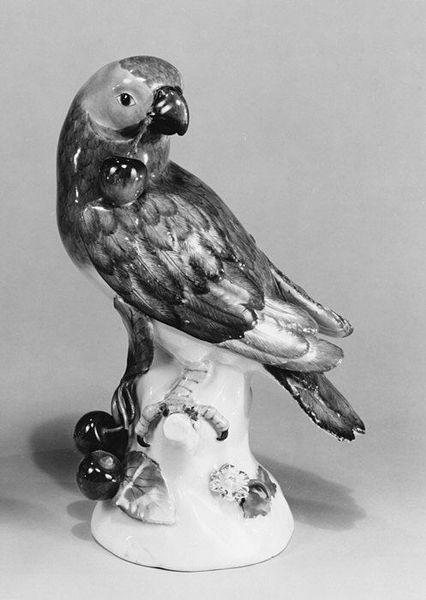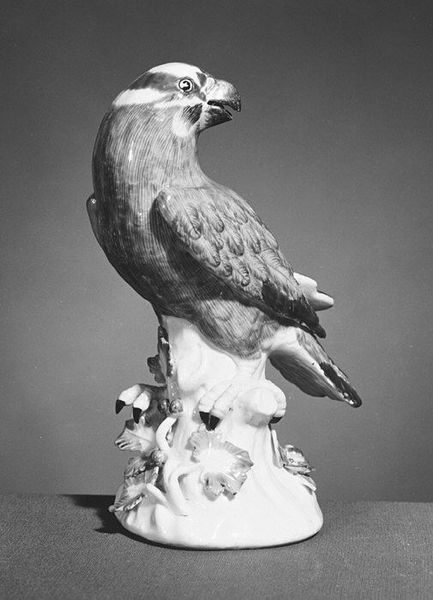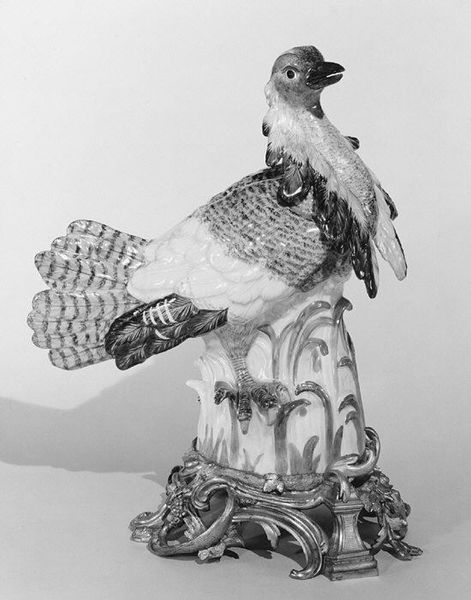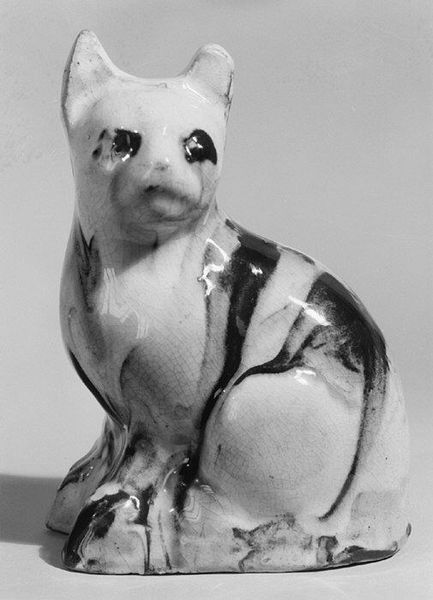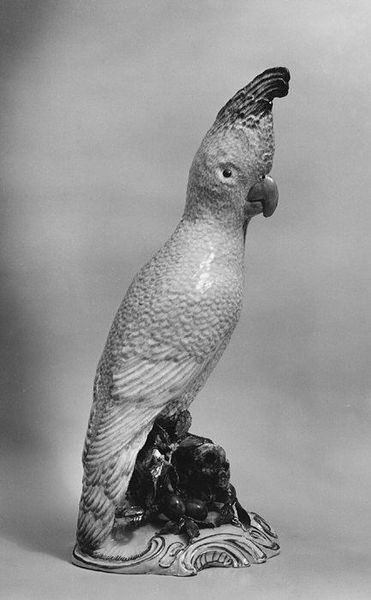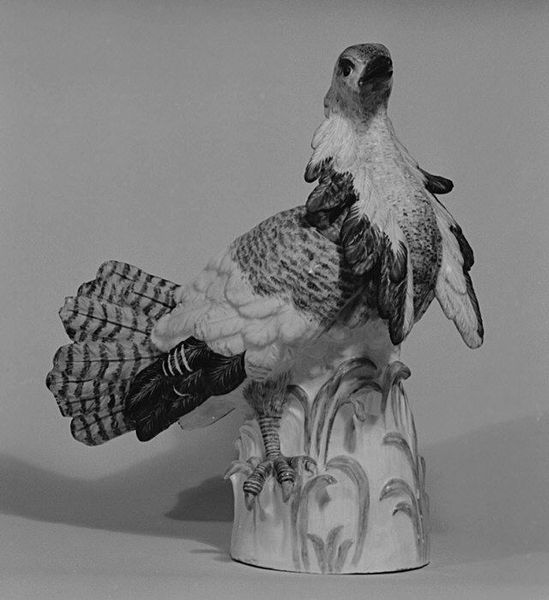
ceramic, porcelain, sculpture
#
sculpture
#
ceramic
#
bird
#
porcelain
#
sculptural image
#
figuration
#
sculpture
#
decorative-art
Dimensions: Overall (confirmed): 2 1/8 x 1 1/2 x 1 in. (5.4 x 3.8 x 2.5 cm)
Copyright: Public Domain
Curator: What a fascinating piece! This miniature figure of a cockatoo was created between 1745 and 1750 by the Meissen Manufactory. It is currently located here at the Metropolitan Museum of Art. Editor: It's so delicate. There's a captivating smoothness to the ceramic, it almost glows. I'm immediately curious about how Meissen achieved that, and the social status implied by owning such a precious object in that era. Curator: The cockatoo is certainly striking as an exotic emblem. It suggests the global reach of trade networks during the mid-18th century. The bird's presence would be a potent symbol of worldly knowledge and, obviously, wealth. Editor: Exactly. The choice of porcelain, too, is so crucial. Meissen was at the forefront of European porcelain production, essentially crafting aristocratic status symbols. Were these pieces purely ornamental, or did they serve another purpose in elite households? Curator: I suspect primarily ornamental, although an object’s "use" goes beyond mere function. Think of the elaborate allegorical programs that informed many decorative arts from this time. The cockatoo itself might symbolize vigilance, awareness, even divine intelligence, depending on the patron’s beliefs. Editor: Right, and let’s think about the process – the mining of raw materials, the specialized labour in shaping and firing the porcelain, the painting of the details…each stage implies complex social relations. Was this purely for European markets, or were pieces like this exported elsewhere? Curator: Certainly, they were sought after across Europe and, with the growth of colonial networks, beyond. These small figurines reflect not only the aesthetic tastes of the time but also the political and economic dynamics that supported such luxurious creations. The whiteness also references an interesting desire. Editor: Agreed. Analyzing the materiality forces us to question the seemingly simple beauty. Thanks for offering a wider context around production and symbolic resonance! Curator: A fascinating reflection from the materials back to the deeper ideas that shaped them, quite literally in this case.
Comments
No comments
Be the first to comment and join the conversation on the ultimate creative platform.
